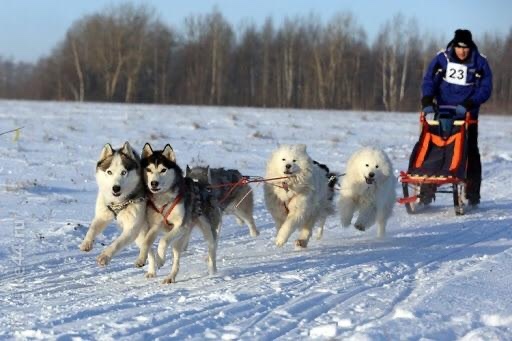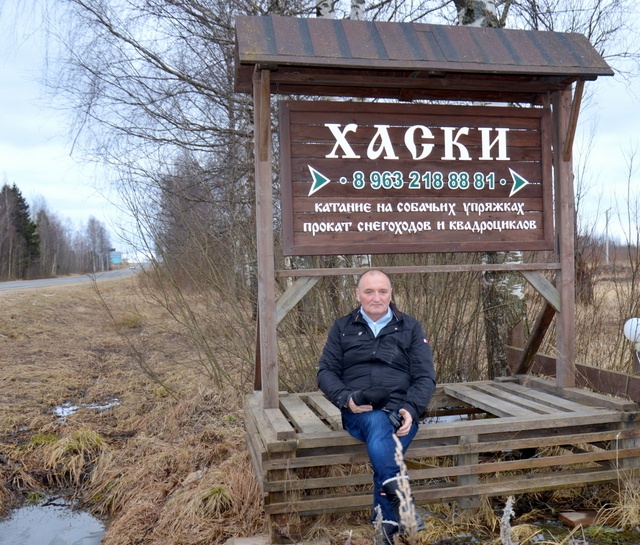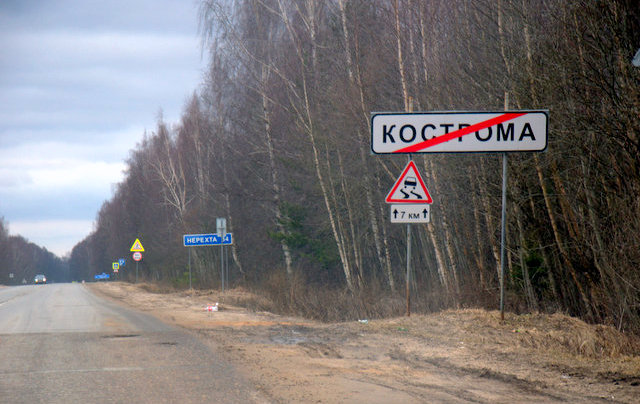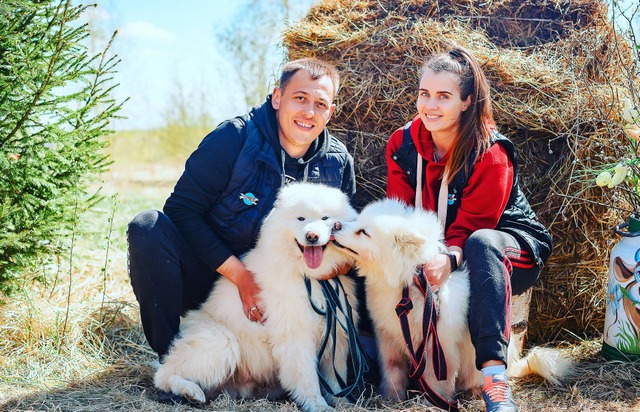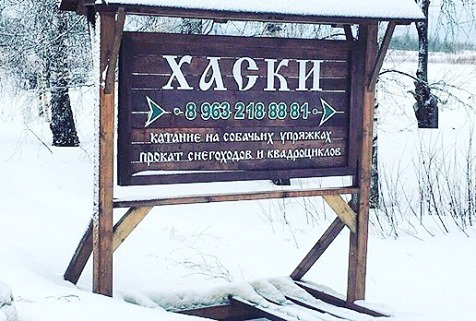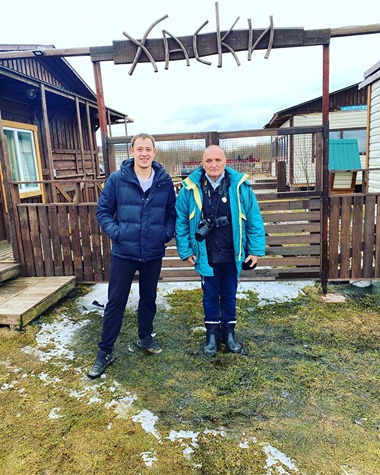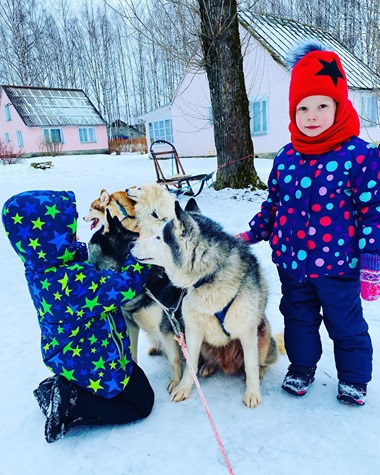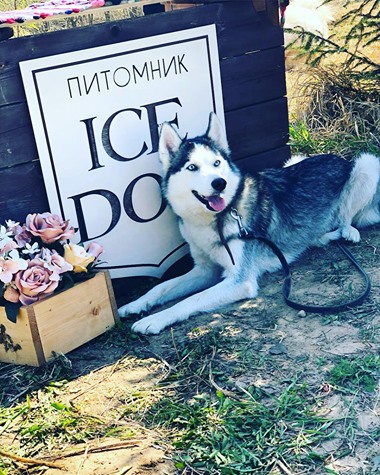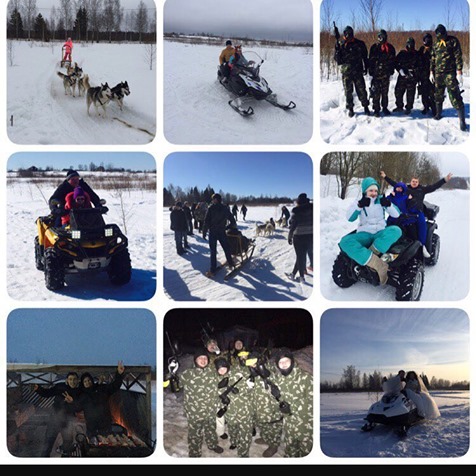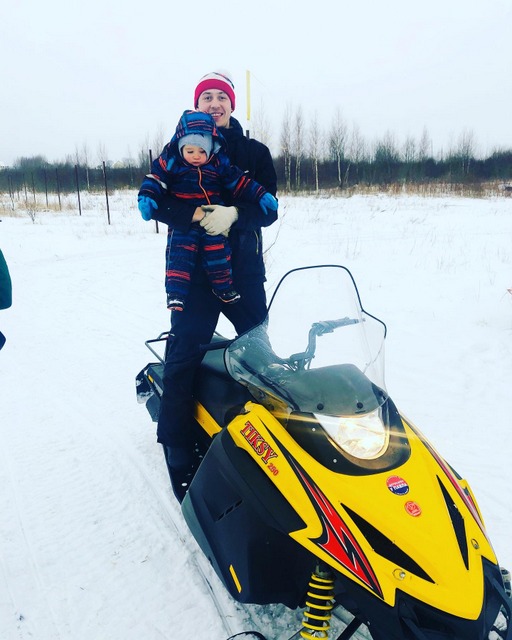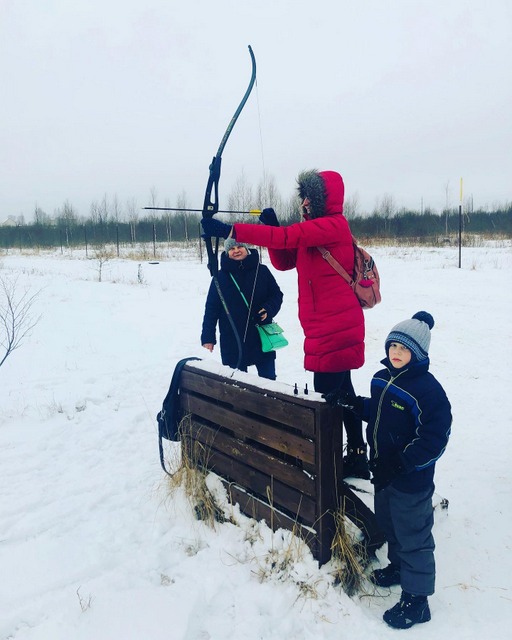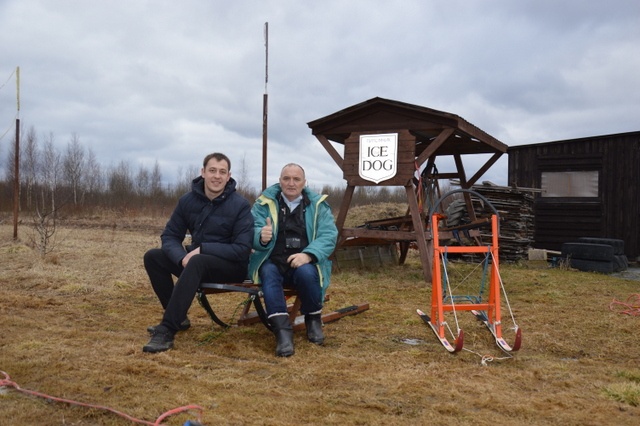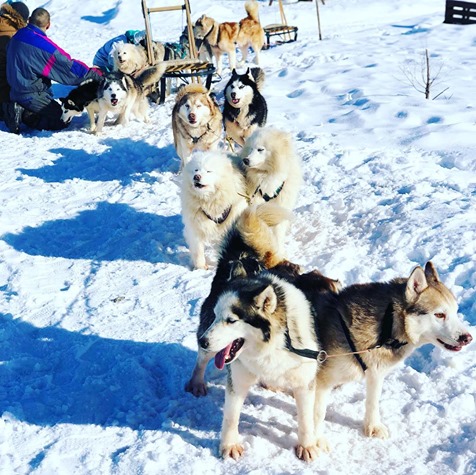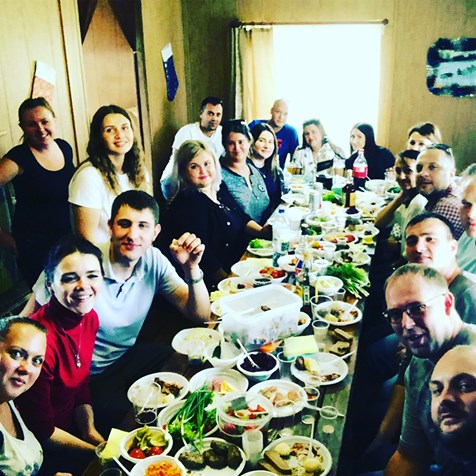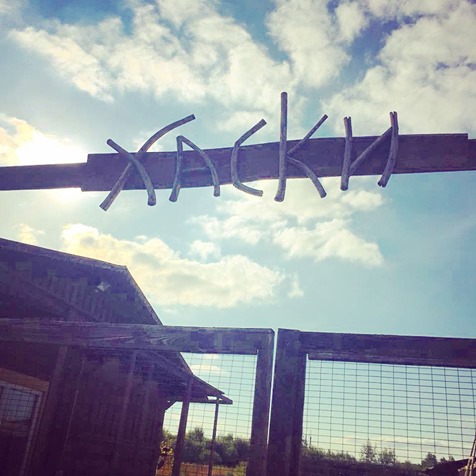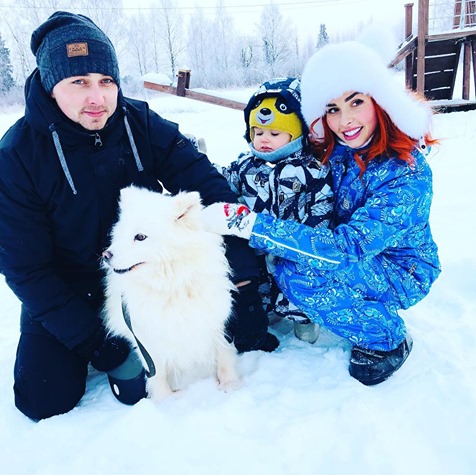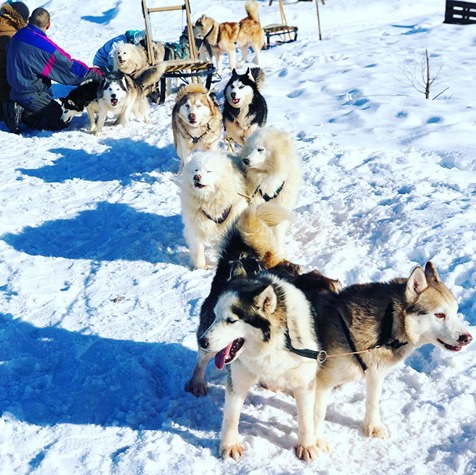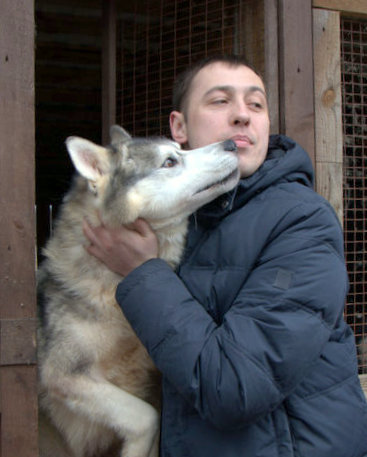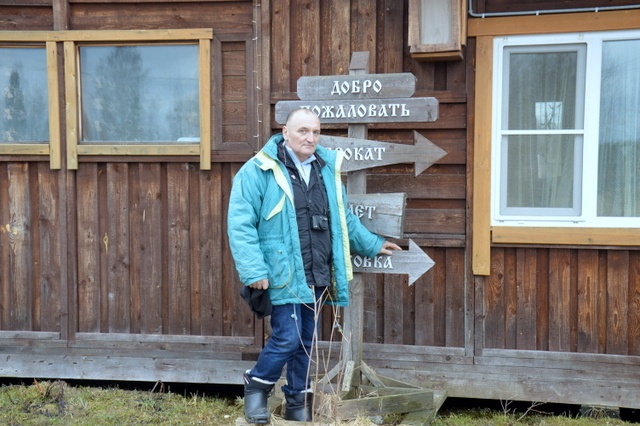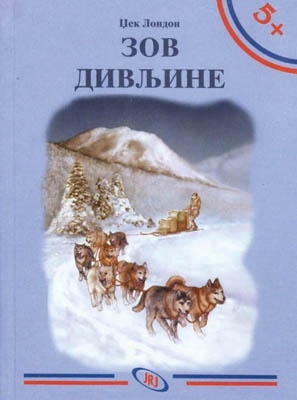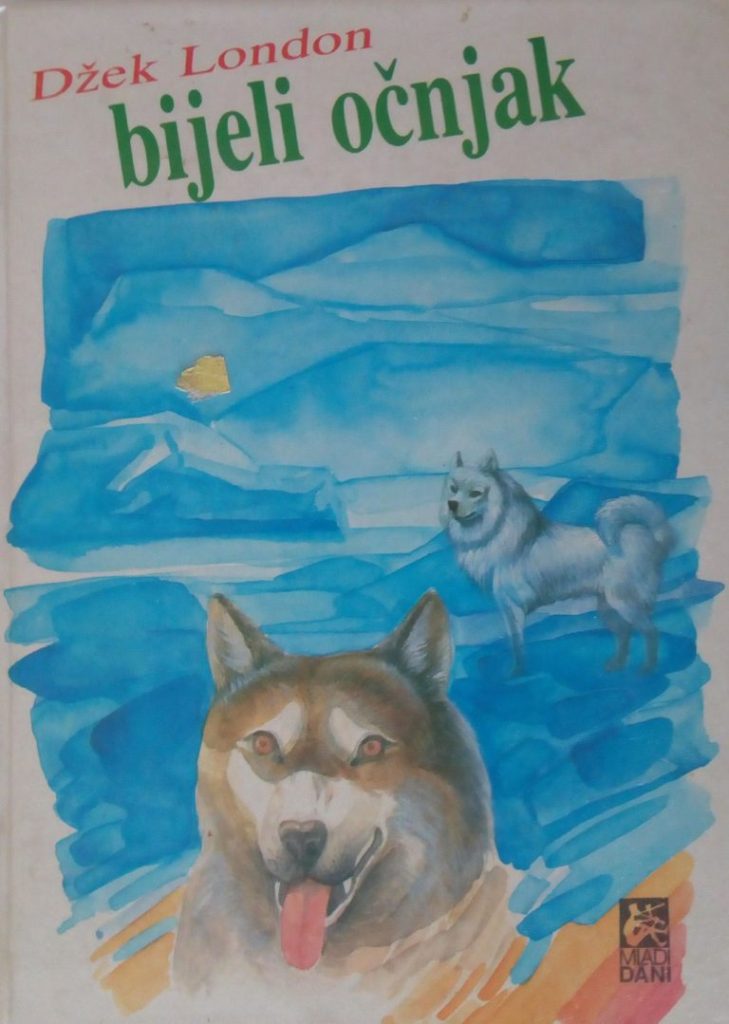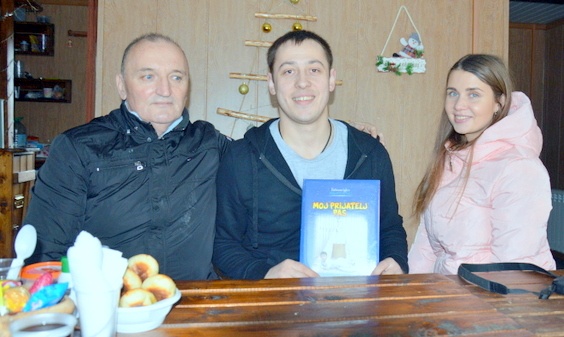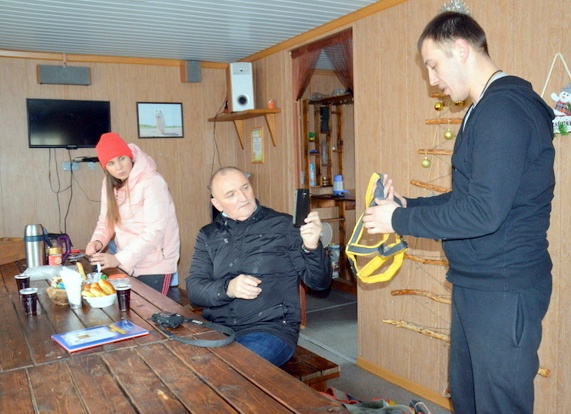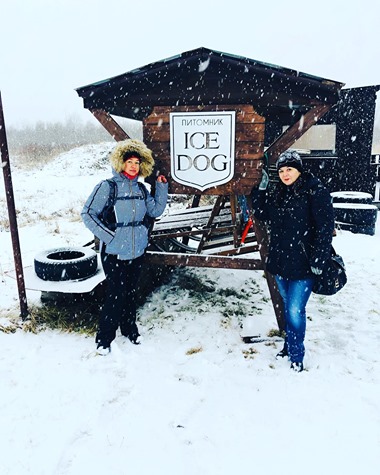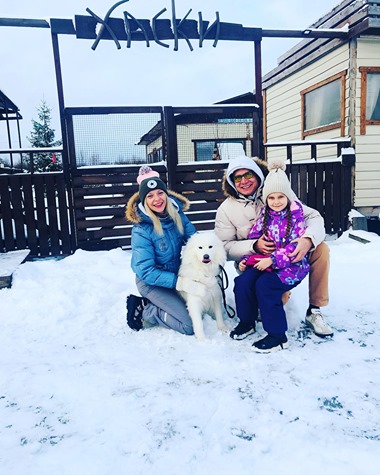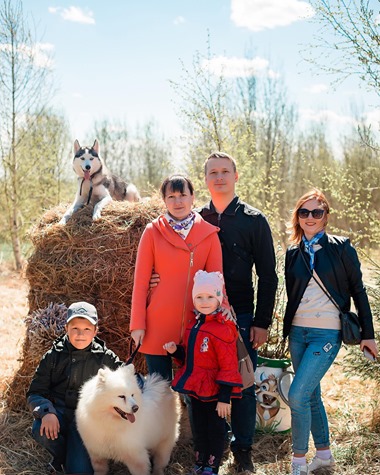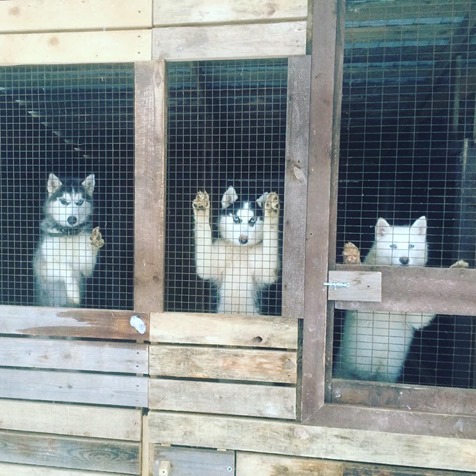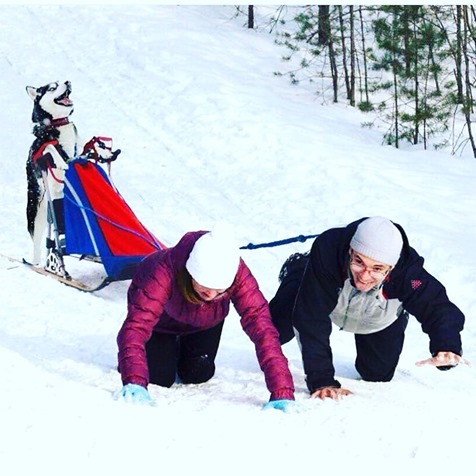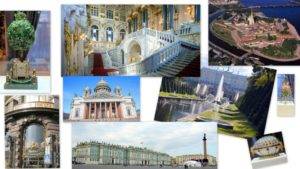Polar dogs have smiling and ” expressive” faces, sometimes they “forget” to bark, then howl like wolves. They are always in the mood to pull sleighs, to ride, and above all to worship people. They love to love, wholeheartedly strive to please “their man” (owner), they do it with great kindness and willingness.
Written by ZORAN M.KOS, JOURNALIST AND INTERNATIONAL CINOLOGICAL JUDGE (FCI) /TRANSLATION: ANA ŠEBALJ / PHOTO AND VIDEO: Z. M. KOS, IVAN AND KRISTINA LEVAKOV ”ICE DOG” AND VALENTIN MASLOV
Russia is an extremely large and beautiful country, the largest in the world, spanning two continents and having nine time zones, offering countless opportunities from its nearly 18 million square kilometers.A space like the Balkans and much of Europe is somehow cramped, “crumpled” and the view is restricted. Russia is a land where space and views are abundant, it is “comfortable” and endless, and the view “shoots” to infinity.
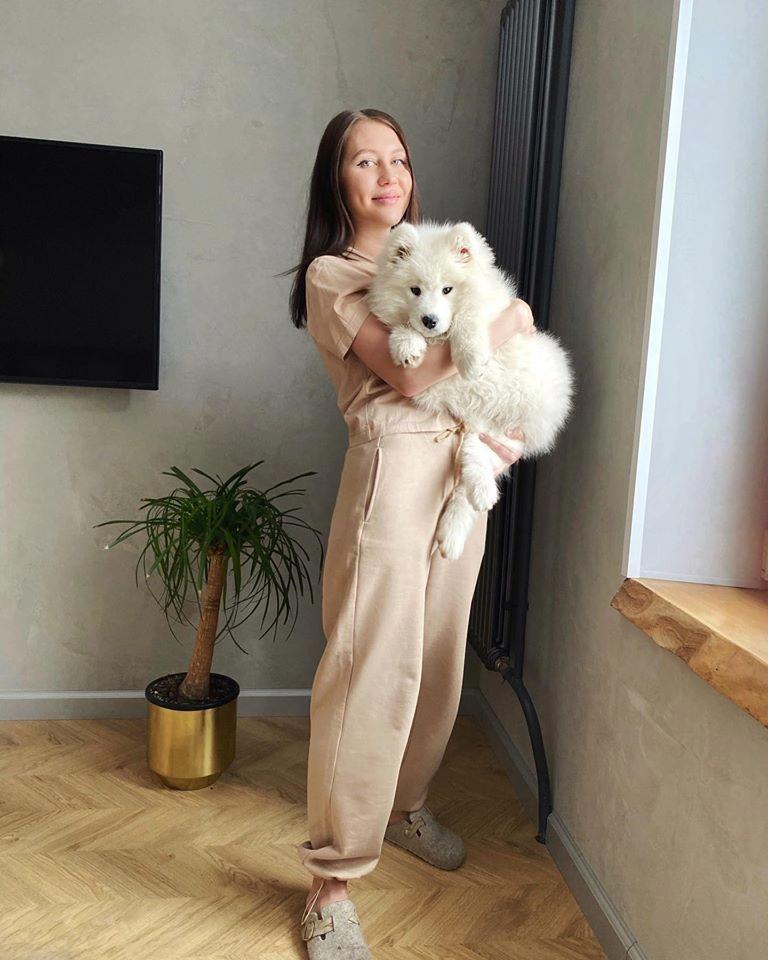
Virginija Grande-“Белая зайка” and Елизавета Семенова. 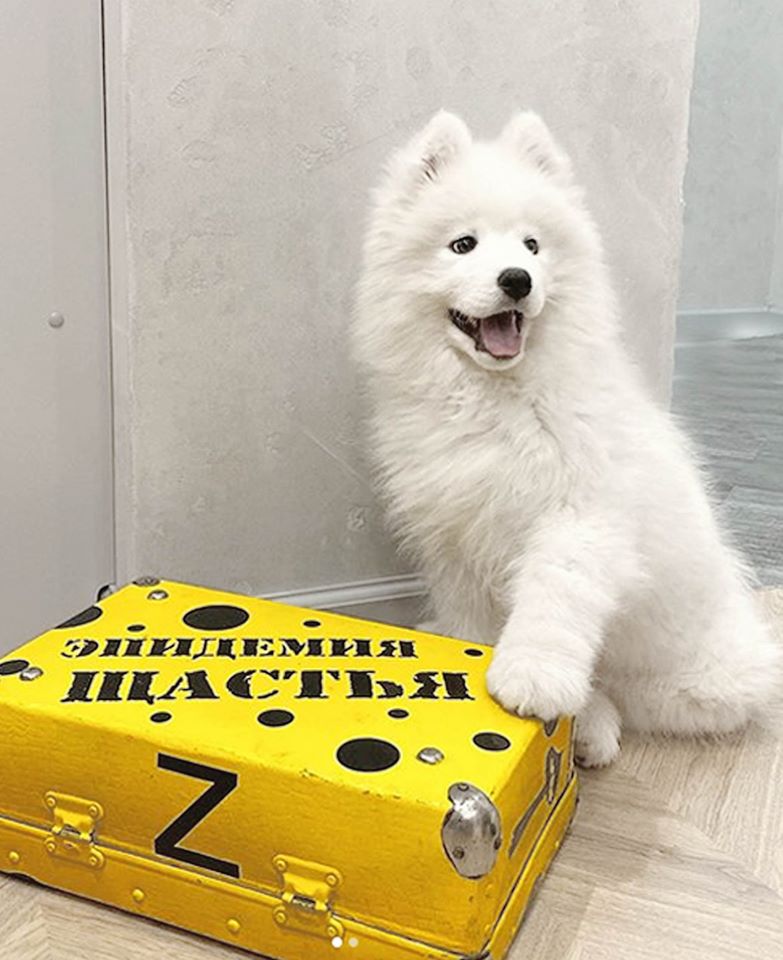
“The epidemic of happiness”:Virginia Grande.
Virginia Grande, a devious and lovable Samoyed puppy, from our kennel who has found a new home in Kostroma the mouth of the eponymous river in the Volga River, about 400 km northeast of Moscow. Well, she is the main reason for me to embark on the journey of Russia again. My great passion was, and have remained, travels. We travel to Moscow by plane, and further by car. An ideal opportunity to visit the Golden Ring, a ring of historic cities northeast of Moscow. Particularly significant for its architecture, which encompasses buildings from the 12th to the 18th centuries: monasteries, cathedrals, kremlin, squares, churches … Kostroma is one of the cities of the Golden Ring, which has been around for more than a millennium.
In Kostroma everything is crowded with many sights. It is difficult to decide what to choose to visit, much of it because of the time constraints of waste.
“ICE DOG” – KENNEL OF SLED DOGS AND RECREATION CENTER
Virginia Grande stays in Kostroma in company with Duncan Lord Nord, an adult male Samoyed, I and my hosts went to the village Oblomikhino a 30-minute drive from Kostroma. We go visit the Ice Dog Kennel and Recreation Center.
The Kostrma River is icy. There is no snow, but there is November. Up to the horizon is a frozen plain with wind that ice everything. Here, everything has some special charm, even the cold that makes blood flow to the veins. Along the path of a large birch area. Birch is a national tree, a symbol of Russian land and synonyms of Russian expanse.
I dressed layered, better to say packed as a head of winter cabbage. The more layers, it is warmer and safer. This clear understands very well why only the strongest survive.The thunderous barking of dogs is a sign that we have arrived at our destination. Of course, this is just their way of greeting, rejoicing, quarreling or showing jealousy. In front of the kennel, we are hosted by our married couple Ivan and Kristina Levakov, young, charming and smiling people.Everything is made of wood, boxes, houses, inns, signposts. A vast plain … This vast expanse, the “splendor” of distance and miles, is vast.
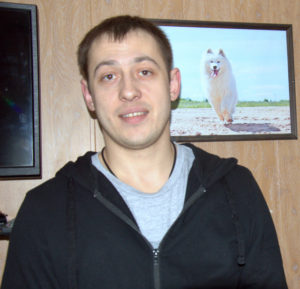
“Our visitors are mostly from Russia, but there are also from other countries. Nobody comes here by accident. Of course, you have to prepare for the trip.”, says Ivan Levakov, owner of Ice Dog – and continues – “The kennel was established in June In 2013. At that time, we had 21 dogs, 16 of which were Siberian Husky and 5 Samoyeds. Who came here, they come back again. ”
He performs Banana, the „leader“ of the dog sled dog leader and continues. “With great certainty, these dogs perform their original role as a sled dog, they can pull the load at moderate speed over long distances. The paws should be short and tight, the fingers should be close together and arched, the pads thick and resilient, the nails short and strong. There must be protective hair between the fingers. The paws are not twisted either, and the wilt and legs and legs must be without mistakes. The movement of the carriage must be uniform and all dogs must be in good condition, step generous and safe, and movement flawless. ” Banana kisses Ivan when he talks.
The village of Oblomikhino is about 3,000 km from Bosnia, comparing the size of the distance, to the end of the Russian north and the border with Alaska there are two times more -6,000 km.
Visitors have recognized us as a place for relax with family and friends on weekends or any working day. “Ice dog” is ideal for escape from the bustle of the city and that’s why many “running” come to us. “, Kristina joins the conversation and through a big smile calls -” Don’t waste your time, come visit us! You will learn a lot about the lives of the dog’s incredible and fond dogs: the Siberian Husky and the Samoyed. By us you have the opportunity to experience an exciting adventure by driving in a dog sled, time spent with us will give you a lot of joy and an unforgettable experience. Selection of dogs is based mainly on features such as physical strength, resilience and endurance. We aim for an ideal working dog of medium size, casual posture and energetic walking, ”adds Ivan.
I was grief-stricken. Sadness that there is no snow. We enter the house for unavoidable Russian tea and other offers.
The hosts show the cups and diplomas from the races he competed in and continues: “As the kennel developed and expanded we had new ideas for recreation. In addition to dog sledding, which is our base, we also introduced snowmobiles, and gradually many other amenities for fun, recreation and socializing: paintball, bampernol, bow and arrow shooting, all of which have become popular with tourists. “
There are now 28 adult dogs in the kennel, Siberian Husky are majority and Samoyed are minority. There are also a few days old baby litter of Siberian Husky.
Dogs are housed in wooden boxes, well raised from the ground, due to cold and wind, one, the front is only open for the same reason. They are lined up and all openings “look” into the yard. On each box is dog’s name and date of birth.
The proportions and body shape of these dogs show a balance of strength, speed and endurance. They look full of power, free and tireless. Watch any video or photo of the dog sleds in full motion and you will see that they are “ALL IN STEP”.
“Working dogs’ ears get hurt in competitions when they run over an opponent. When teams run side by side, it often happens that dogs start fighting with the other team …” Ivan explains.
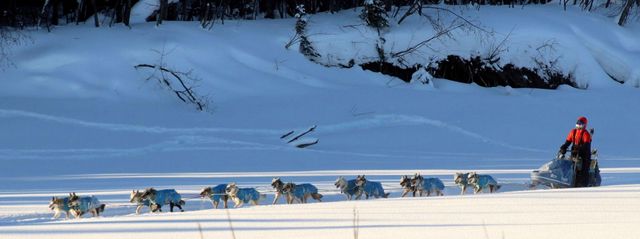
IN THE BEGINNING WAS A WOLF…
This is an opportunity to remind the history and origin of the polar breeds. There are very few written documents, the legend says that they were half-wolves because the tribes left females overnight to be mated by wolves. Many disagree with this … The first written clues about polar dogs “about white dogs pulling sleds” were left by Adam Brand in 1696.
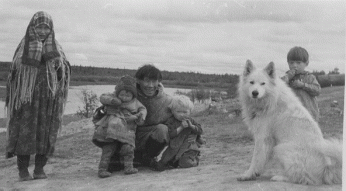
Foto by Wikipedia. 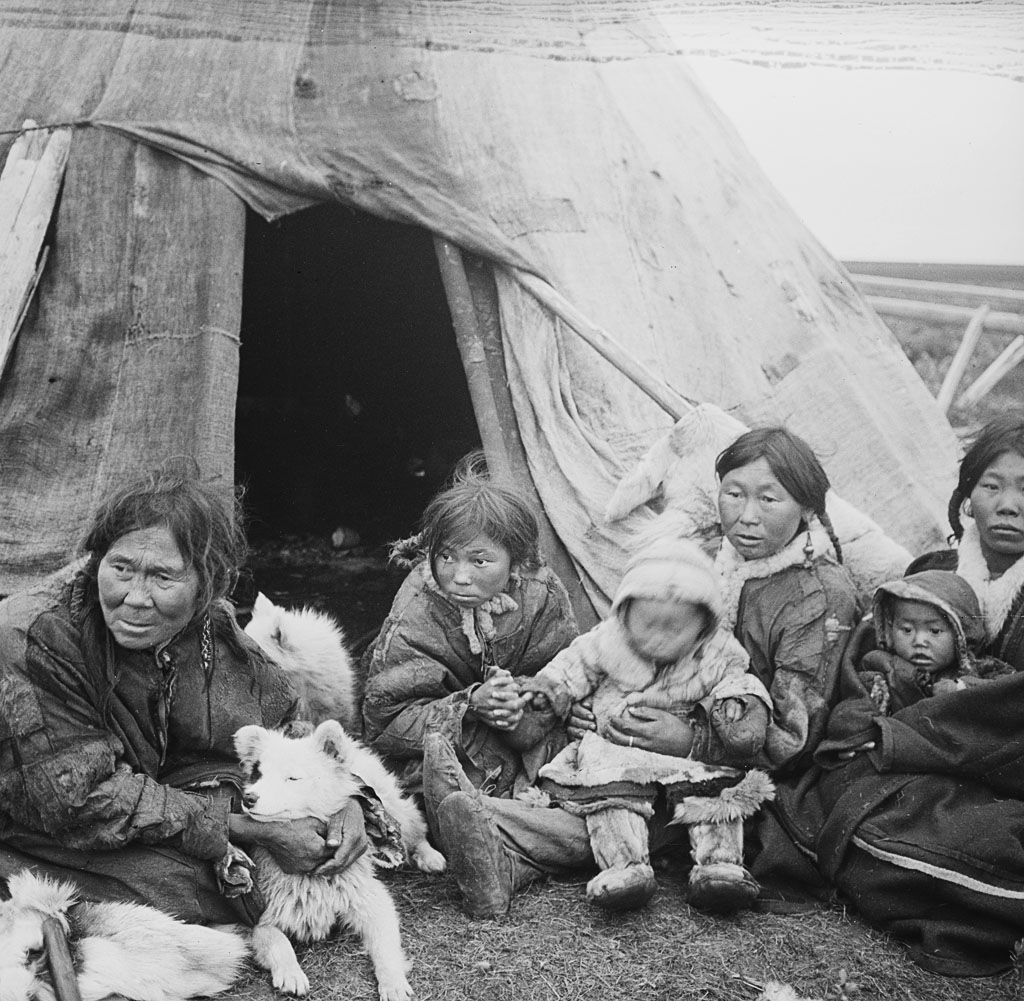
Foto by Wikipedia.
The way to the sanctuary. Film Andrei Golovnyov.
Road to the shrine. Movie by Andrey Golovnev, ethnographer and director as a pilgrim who travels with the Samoyed / Nenite people to the famous Shrine of the Seven Chums in the north of the Jamal Peninsula.
As we know, the life of the people of the North depended on harsh climates. Indigenous peoples’ occupations were and remain exclusively traditional: hunting, fishing, breeding irvas – deer pulling Santa Claus sleighs, which implies a nomadic lifestyle. Of course, everyone also had “their” dogs.
Malemutes, Corsairs, Aleuts, Chukchi, Samoyeds are the indigenous peoples of Russian land around the Bering Sea, Kamchatka and Alaska.The Alaskans that were sold to America in 1867 in a package of land and people for less than $ 5 per square kilometer!
The traditional way of life of the northern peoples, based on a close connection with nature. People and tribes who have entered the legend for their four-legged dogs whose only life is possible in a land shrouded in everlasting ice. Separation and self-isolation have made group of pra-type dogs, a group that science claims is closest to the wolf, which much later cynology will call the Nordic or polar breeds of dogs. Characteristics according to which we know them today. According to the systematics of the International Kennel Federation (FCI), they are classified as a V group in the prim type / primitive type of dogs.
THE STORY OF POLAR DOGS…
The harsh climate created from ordinary life a magnificent bond between man and polar dog. Living uninterruptedly, for a full 24 hours together, they began to imitate one another, especially when it came to being young. Dogs loved children so much that they treated them like their cubs.
On cold nights, they slept with them, warming them with warm bodies, and on hungry days they ate the same food. Polar dogs are smiling and “expressive” faces, sometimes they know that they “forget” to bark, then they howl like wolves. They are always in the mood to “pull the sleigh” — to annoy and adore people in the first place. They love to love, work diligently to please “their man” (the owner) and do so with great kindness and will.
TODAY POLAR DOGS HAVE “OTHER” PURPOSE
Today, they are excellent competition dogs in the short and long track, in competitions who can carry the burden of “pulling”, for “guiding” the visually impaired or as therapists for people, and above all children with disabilities, as ” fitness trainers “as escort dogs and leisure dogs as our” best friends “- pets in increasingly alienated lives in big cities and even bigger megapolises. Many and many of the stories about polar dogs are very fictional, no wonder, since many dog owners, of course, and dog sled owners, often out of much love for their dogs, attribute human traits.
WHITE CANINNE, CALLING OF THE WILDNESS…
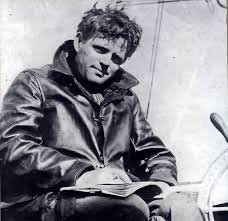
Foto by Wikipedia
Although the Indians and Eskimos who have inhabited Alaska since time immemorial used harness dogs, only the onset of “white” diggers at a time of golden fever whose survival depended heavily on this mode of transportation did polar dogs come to the fore. The legendary Jack London (1876-1916) is to blame for the great hike of the northern dogs into the world, whose novels, albeit romance ones, drew much attention to the lives of people in Alaska, more specifically the lives and connections of dogs and humans, and after “The White Canine”, first a legend, followed by the northern dogs and conquered the rest of the world.
Young Jack London, long before he starts writing, has found himself in Alaska as a gold digger. Enchanted by the unbreakable bond between man and dog, he will later write books The White Canine, Call of the Wild and many others. The romance stories of Baku, Jerry, Michael left no one indifferent. Their appearance draws the attention of the world public to the lives of people and dogs in Alaska, the great and unbreakable connection of dogs and people in the icy hills of Alaska.
“RACE FOR LIFE”
Iditarod – “Thousand Mile Race” official; Iditarod: The Last Great Race is the most fierce endurance test for polar dogs today. It has been running since 1967 every year in early March in Alaska and involves harnessing dogs from Enchorage, Alaska’s largest city, to the city of Noma. It involves machines, sled riders and their dogs. The race is 1000 miles long – about 1,700 kilometers and is a great challenge because it takes place in difficult conditions, passing through mountain ranges, frozen rivers, dense forests, desolate tundra and kilometers of shorelines in the windy area.
IDITORY, A RACE THAT STARTED A LONG TIME…
It is that famous ‘story of Balt – a race against time’, and the struggle for the survival of a village whose inhabitants owe their lives to the hairy, four-legged carriages, sacrificed carriages (‘drivers’), whose courage, ability and endurance will later turn into legend … The village of Noum, Alaska in 1925, a diphtheria epidemic, a salvage serum brought on by harnessed dogs and their flies today is a planetary legend.
Polar dogs, after a “race for life” through the drones and storms in the land of perpetual ice at -50 C, carrying a life-saving medicine for the village of Noum, go into myth and legend.
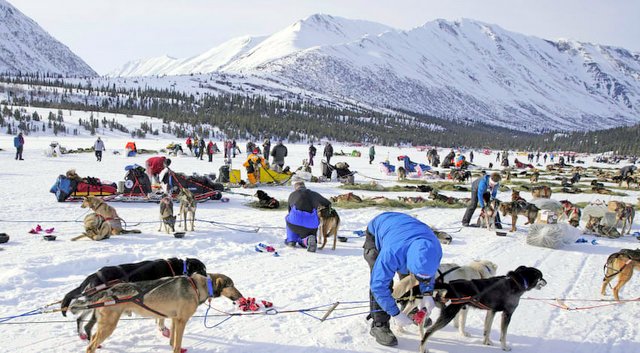
IN HONOR TO SLED DOGS!
A memorial was made in New York Central Park to commemorate the participants of this race, a special place was given to the Alaskan Malamute Bolt, leader of the last detachment (team = team = human-musk + dogs), which arrived in Noume after in 127 and half hour for distance 1250 km.
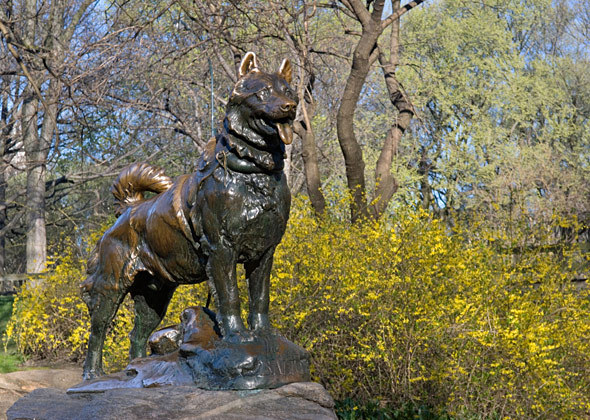
Foto by Wikipedia 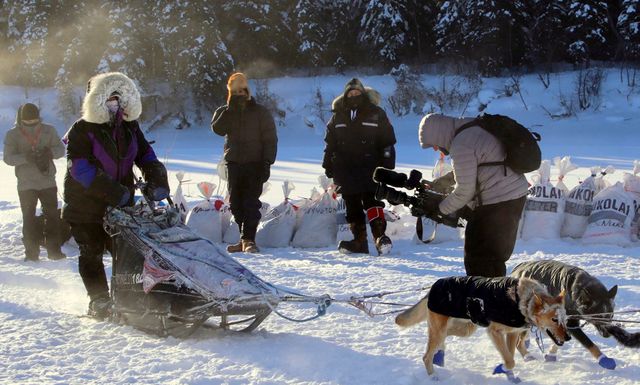
The Last Great Race): https: //iditarod.com/
NAMES OF BREEDS
We know that dogs were named after the tribes-nations that breed them. Alaskan Malamute by Malhemute tribe of Indians, Siberian Husky by Eskimos, Samoyed reindeer by Samoyed (or Samoyed) people.
Today, in most cases in America, all sled dogs are called “husky dogs.” Similar to “American practice,” our host John calls the Samoyed: “Samoyed Laika” – Самоедской Лайки!
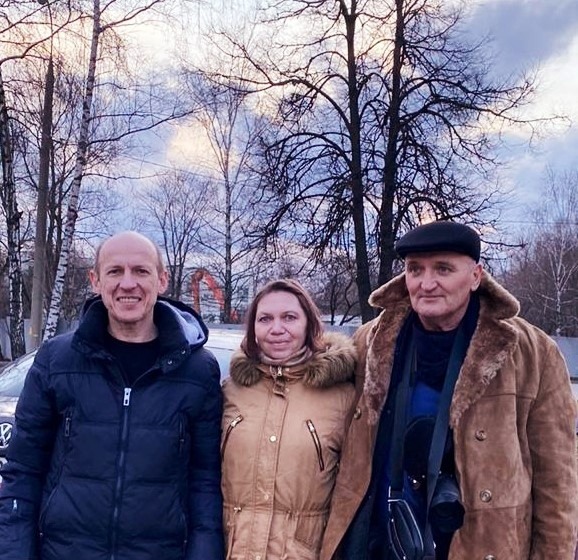
The harsh climate of the north created from ordinary life a strange and unbreakable, strangely intertwined connection between man and polar dogs. During cold nights, they slept in shelters in one bed, warming them with warm bodies, and during the hungry days they ate the same food. This great and boundless love is the main characteristic of all polar dogs today. The mentality of polar dogs seems to be passed on to breeders too. Nations and tribes who have lived in harmony with nature for thousands of years in the harsh conditions of the North and the Polar Circle.
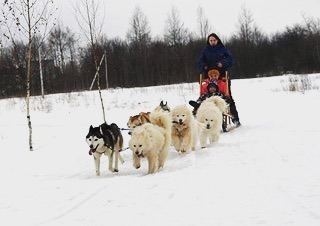
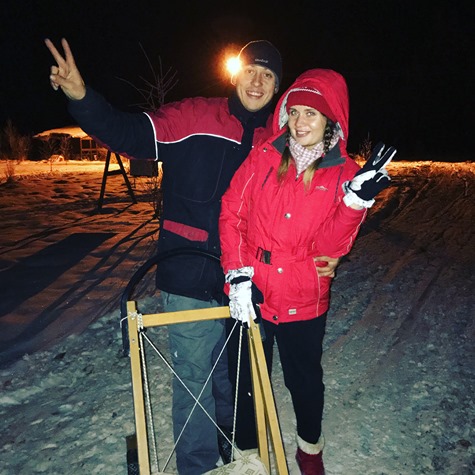
Ivan and Kristina Levakov
Heartiness at every turn. You can feel the warmth of the Russian soul. Certainly, it is my turn to emphasize the hospitality of our hosts, as well-known hospitality has been confirmed in our case as well. Full of great impressions, new insights and friends with a bag full of gifts, I’m leaving the Ice Dog! This place is worth a visit, “Ice dog” a great place for rest and recreation. If the road hits you in Kostroma, don’t miss the „Ice Dog“. This place is especially suitable for those people who love polar dogs, life in nature and is a unique opportunity to find out what traits these adorable wonderful people and dogs from the north adorn.
In spite of the nasty weather and the distance, I re-planned the road to the North, that great cold has some strange heat in it, only to get this unfortunate COVID-19 out of the way.
How about you?
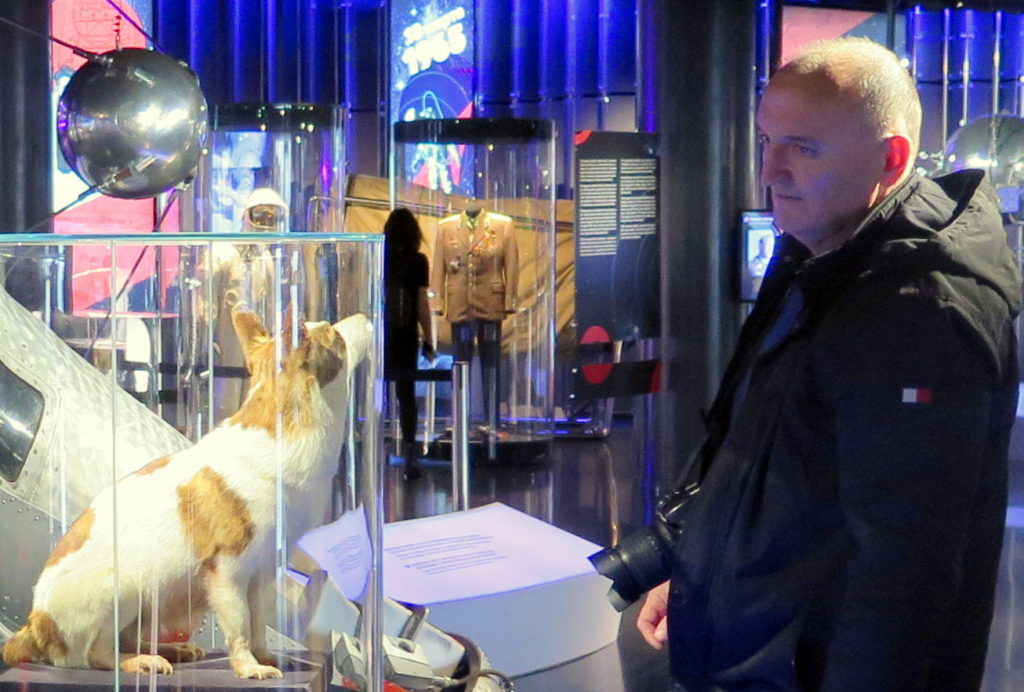
Literature:
Головнев А. В. “Говорящие культуры: традиции самодийцев и угров.” Екатеринбург: УрО РАН, 1995.
Андреи Владимирович Головнев & Gail Osherenko:Siberian Survival:”The Nenets and Their Story” Ithaca, New York: Cornell University Press, 1999.
“The Samoyed peoples and language”–Péter Hajdú, Indiana University, 1963
Nikolaj Ševčenko”:Tri autohtona naroda Rusije koja preziru civilizaciju i žive po običajima svojih predaka” (2020, Russia Beyond)
You can follow „ICE DOG“ on Instagram:https://www.instagram.com/ice_dog_44/?hl=sr
THE DOG REPUBLIC ™: (4/23/2020)
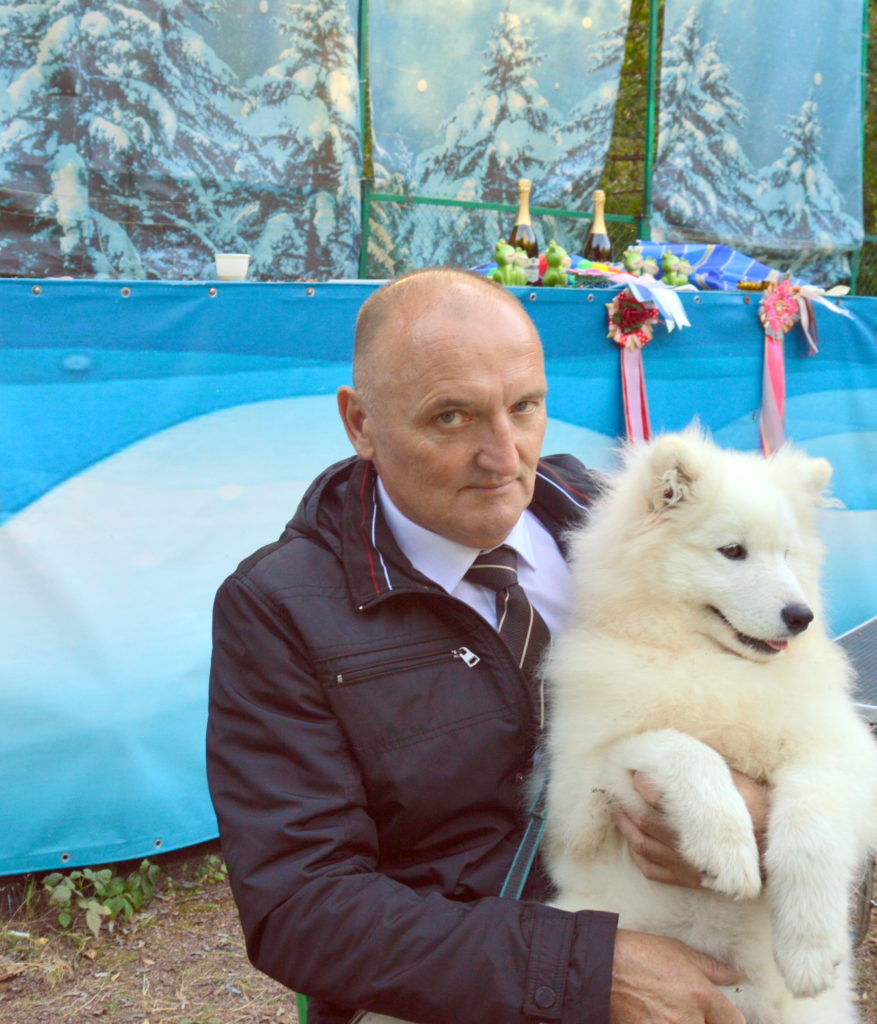
By Zoran M. Kos, Editor Journalist and FCI judge
e-mail:gambitrs@gmail.com
If you liked this text please share it on social network!
Copyright © 2019-2020 THE DOG REPUBLIC. All rights reserved.

